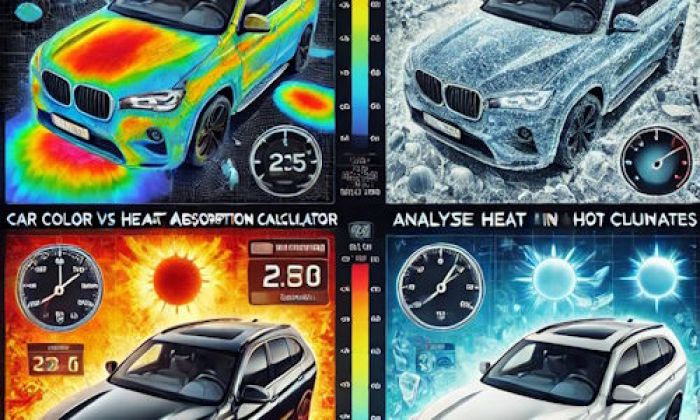High-intensity discharge (HID) lights are no longer just a fad but they are now becoming an essential part of new vehicle models. Besides the fact that they are more stylish than other kinds of lights, they offer more utility than conventional car headlamps because they are brighter and they use less power.
Voltage problems highlights
- Level of urgency:high
- DIY inspection:possible but complicated
- DIY repair:impossible
- Can you drive?yes
- Price for repairs:$150 - $350
- Symptoms:anomalies with electrical equipment, dimming or flickering lights
- Ways to solve:use multimeter to test various equipment and find the source of voltage issues

How HID Lights Work
HID lights work by sending an electrical current through an encasing filled with xenon gas and metal salts. This produces a bright light that is useful for illuminating the road ahead.
One of the main benefits of HID lights is that they can greatly improve your visibility while driving at night and in other low-visibility conditions like strong rains, heavy snow, and thick fog. Compared to halogen lights, they illuminate the road better so you can easily see obstacles on the way, they have farther reach, and they help other road users spot you better. All these can help you avoid potential accidents along your path.
In addition, HID lights use up less energy than other alternatives. These will let you conserve fuel while preserving your battery life.
Moreover, HID lights give your car a unique and stylish look. They produce a better glow than halogen lights plus there are many designs you can choose from with plenty of color choices.
Lastly, HID lights are known for their durability. They lack the fragile filaments normally used by halogen lamps which are more prone to quick wear due to strong vibrations coming from a bumpy ride.
When they start flickering, however, they can be distracting to you and other drivers on the road. Flickering HID lights can also indicate that there is an issue with your car's electrical system. So, it's of utmost importance to find the cause of the problem and have it fixed as soon as possible.
Common Causes of HID Flickering Issues
There are many things that could affect the operation of HID lights in your car. However, we have narrowed the most common causes of the problem in this section based on reports, car forums, and certified car technicians.
1. Power is Directed to the DRL
According to technicians, many HID flickering issues tend to occur in cars equipped with daytime running lights (DRL). Normally, HID lights require 35 watts to work well, but when the DRLs are also active, the amount of power that goes in them gets reduced to 20 watts. As a result, the insufficient power distribution makes the HID lights flicker.
If you don't want to disable the DRLs, one way to fix this issue is by getting a relay harness. This will ensure that your HID lights get the power they need, even when your DRLs are turned on at the same time.
Another solution is to install a capacitor. This will help store and release power as needed, which can help stabilize the current going to your HID lights. This will prevent them from flickering or shutting off entirely.
If you're still having trouble with your HID lights flickering, it's best to consult with a professional who can diagnose and solve the problem for you.
2. Low-Ampere Fuse
There are a few reasons why your HID lights might flicker on a 10 or 15-ampere fuse. One reason could be that the amperage is too low for the lights, and replacing the fuse with a 20-amp unit may solve the issue.
Another reason could be that the HID bulbs are not getting enough power. This can also be resolved by upgrading to a 20-amp fuse with lower resistance and better power supply.
3. Shorted Fuse
A shorted fuse can cause all sorts of problems, and the flickering HID lights is just one of them. A burnt fuse is usually caused by a faulty wire or connection somewhere in your car's electrical system.
You can easily spot a shorted fuse if it has burnt marks on some of its parts. In the absence of visual signs, you can use a multimeter to find the fuse that you think is triggering your car's electrical troubles.
Simply remove the problematic fuse from your vehicle's fuse box. Then, connect one lead of the multimeter to the metal tab on the top of the fuse, and touch the other lead to the opposite end. If the multimeter reads "0 ohms," then the fuse is good. If it reads anything else, then the fuse is likely shorted and needs to be replaced.
4. Faulty HID Lamps
Typically, HID lights can last up to 5,000 hours of use but this may not always be the case if several other factors come into play. If your HID lights seem dimmer than they used to be, it could be a sign that the bulbs are beginning to fail.
In some cases, you may be able to clean the bulbs and their connectors in order to restore them to their original brightness. However, if this quick fix is no longer possible, you may need to replace the bulbs entirely.
5. Defective HID Ballast
The HID ballast is the device that regulates the current going to the HID bulb in order to produce light. The ballast provides the initial surge of power to ignite the bulb and then it continues to regulate the current, ensuring that the bulb remains lit. If it's defective, your HID lights may start to flicker, dim, or they may not turn on at all. In some instances, it may cause excessive brightness in your lights which will hasten their wear.
If your HID ballasts are defective, you will need to replace them. You can purchase replacement HID ballasts from most auto parts stores or online retailers. Be sure to get the correct ballasts for your vehicle to ensure that they are compatible with your HID bulbs.
6. Wiring Issues
Wiring issues are sure to result in plenty of problems for your auto. Flickering HID lights are just the least of your concerns here, so this should be addressed immediately.
First, check all of the connections between the HID bulb and the ballast. Make sure that they are tight and free of corrosion. If necessary, clean the contacts with a cotton swab dipped in rubbing alcohol.
Next, inspect the wire harness for any damage. Look for frayed or broken wires, and check for loose connections. If you find any damage, repair or replace the affected parts as needed.
Finally, make sure that the ground connection is secure. The ground wire must be securely attached to a metal surface on the car. If it's loose, tighten it down or replace it with a new one.
7. Drained Car Battery
Flickering HID lights may be a sign that your car battery is no longer providing enough power. It will most likely be coupled with other symptoms like problems starting your vehicle, the battery light warning turning on in your dash, and your vehicle's electronic systems behaving erratically.
To diagnose the problem, check the voltage of the battery using your trusty multimeter while the car's engine is off. If it's below 12 volts, it needs to be recharged.
If this is already a recurring issue though, it may be a sign that your battery is due for replacement. In this case, better have it changed right away.
8. Worn-out Alternator
When your HID lights start flickering, it's usually a sign that your alternator is going bad. The alternator is responsible for providing power to the electrical system in your vehicle, and when it starts to fail, the lights are usually one of the first things to go. There are a few other symptoms of a failing alternator that you should be aware of, so if you are experiencing any of these, it's time to take your car to a mechanic and have them check it out.
If you see that your battery light is on more often than usual, or if it stays on even when the engine is running, that's a sure sign that the alternator isn't doing its job properly. Another symptom to watch out for is dimming headlights or interior lights. If you notice that your lights are gradually getting dimmer, it's a good indication that the alternator is on its way out. Finally, if your car starts to have trouble starting, or if it stalls more often than usual, these are also signs that the alternator isn't providing enough power to the engine.
A failing alternator can cause all sorts of problems, and your flickering HID lights is only the tip of the iceberg. If the bad alternator is not repaired or replaced, it can eventually lead to a total breakdown of your vehicle's electrical system.
Conclusion
Flickering HID lights should be fixed without further delay as these are essential in low- or poor-lighting conditions. Aside from numerous safety reasons, these can be an indication of other major electrical issues in your car. Therefore, this is something that a qualified technician should address without further delay.
About the authors
The CarAraC research team is composed of seasoned auto mechanics and automotive industry professionals, including individuals with advanced degrees and certifications in their field. Our team members boast prestigious credentials, reflecting their extensive knowledge and skills. These qualifications include: IMI: Institute of the Motor Industry, ASE-Certified Master Automobile Technicians; Coventry University, Graduate of MA in Automotive Journalism; Politecnico di Torino, Italy, MS Automotive Engineering; Ss. Cyril and Methodius University in Skopje, Mechanical University in Skopje; TOC Automotive College; DHA Suffa University, Department of Mechanical Engineering






Add comment